Freddy Krueger Speaks: Robert Englund Breaks Down His Legendary Horror Career
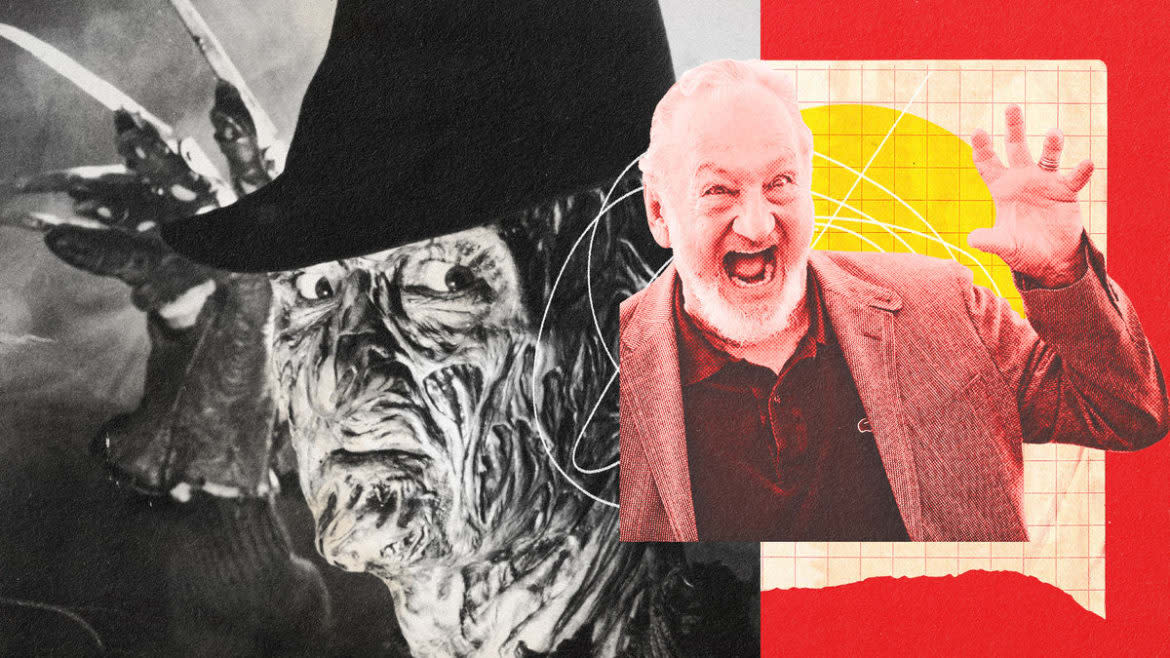
- Oops!Something went wrong.Please try again later.
- Oops!Something went wrong.Please try again later.
- Oops!Something went wrong.Please try again later.
- Oops!Something went wrong.Please try again later.
In the pantheon of horror movie villains, few hold a higher position than Freddy Krueger, the malevolent melted-face child molester who stalks teenagers in their dreams.
With his razor-fingered glove, red-and-black sweater and ratty fedora, Krueger is a fiend of demonic deviance, his viciousness only matched by his dark, demented sense of humor. First introduced in Wes Craven’s seminal 1984 film A Nightmare on Elm Street, and then cutting a swath through a bevy of Hollywood’s youngest and brightest in seven additional films (as well as TV’s Freddy’s Nightmares), he ranks alongside Michael Myers and Jason Vorhees as one of modern cinema’s undisputed lethal legends, a monster so unforgettable that he quickly became one of his era’s most recognizable pop-culture icons.
And he’d be nothing without Robert Englund.
A character actor who found his unlikely calling by slicing and dicing fresh-faced teens in the Nightmare franchise (and madly cackling all the while), Englund is as synonymous with Freddy as Bela Lugosi with Dracula and Boris Karloff with Frankenstein—and just as revered by genre fans.
Englund may have originally had no pressing interest in horror, but A Nightmare on Elm Street nonetheless transformed his career, and his path from Hollywood up-and-comer to macabre marvel is now traced by Hollywood Dreams & Nightmares: The Robert Englund Story, a Christopher Griffiths and Gary Smart-directed bio-documentary premiering June 6 on Screambox and VOD.
Featuring interviews with many of his admirers and collaborators (including Eli Roth, Mick Garris, Lance Henricksen and Kane Hodder), as well as Englund himself, it’s an effusive tribute to an artist who snagged the role of a lifetime, and then learned to come to terms with the fact that it was going to forever define his legacy.
Now 75, Englund hasn’t donned the Freddy make-up and glove since 2003’s Freddy vs. Jason (not counting his 2018 appearance on ABC’s The Goldbergs), and speaking shortly before the documentary’s premiere, he seems more than content to leave the role to others. With an insightfulness that’s colored by a sharp sense of humor, Englund knows that he’ll always be known for Freddy, and yet he continues to inhabit a wide variety of genre parts that take advantage of both his dramatic and comedic skills.
Moreover, he still clearly gets a thrill from fans’ excitement for his most famous work, in part because he understands the lasting impact it’s had on them and his fellow filmmaking horror-hounds. Consequently, it was an honor to chat with him about his past, his future and—of course—all things Freddy.
Hollywood Dreams & Nightmares concludes with talk about the affection fans have for you, and you for them. I bring this up because I’m going to chime in and admit that, as a cinephile who can trace his fondness for horror back to a 1987 Friday night HBO double-feature of the first two A Nightmare on Elm Street films, speaking with you is a legitimate honor.
I think people forget that back in the ’80s, we had this sort of triple whammy of theatrical release, then the video generation began—and this was before Blockbuster, it was the mom-and-pop stores—and then that rough cable came out, the Z-Channel, and then HBO, and they would run it a lot. There was a lot of sleeping over at a friend’s house while mom and dad were at Lake Tahoe for the weekend. You could watch anything you wanted [laughs]. I think a lot of boys lost their virginity in a kind of way with Red Shoe Diaries, and David Duchovny and all those women [laughs].
[Laughs] I understand.
There was some minimal controversy with A Nightmare on Elm Street and the darkness and the violence of it when it originally came out, but I forgot how many millions of people shared the experience of that movie with brothers and sisters, moms and dads, stepmoms and stepdads, aunts and uncles, on the weekend. You know, mom and dad would rent Pretty Woman, and the kids would also get to choose one, and they’d choose A Nightmare on Elm Street and watch mom and dad jump the first time Freddy appeared on-screen, or dad would come out later that night with knives taped to his fingers and scratch the screen outside the kids’ bedroom.
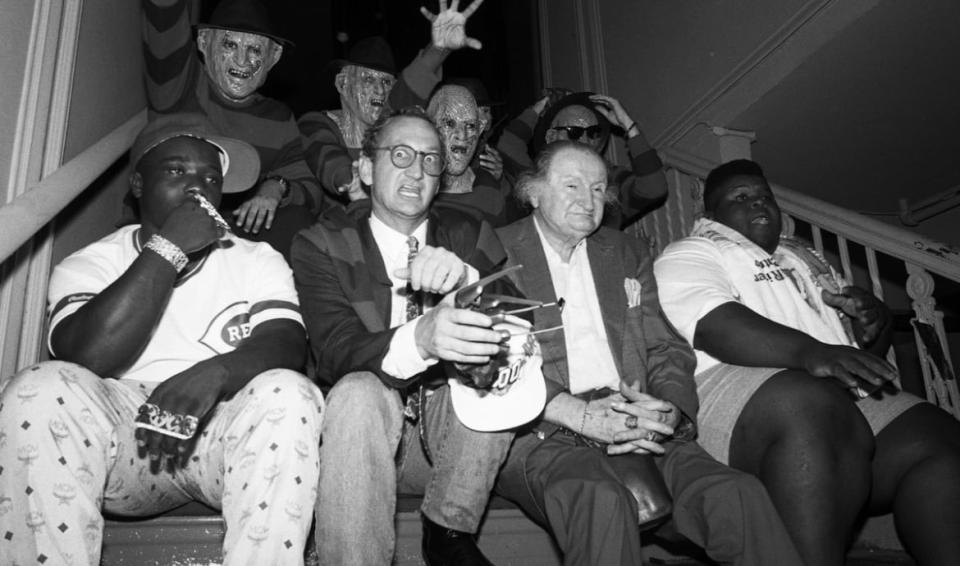
That’s an amazing image.
We forget what a part of Americana that experience was, of going to the mom-and-pop video stores or Blockbuster with the family, and what a difference that is, to sit around with a lukewarm pizza and beer and watch movies with the pause and replay buttons, which changes the viewing experience.
It’s kind of a cultural shift right there. [Affecting his Freddy voice] And you were part of it!
That communal experience seems somewhat unique to horror. Do you still feel that sense of community when you go to conventions or run into people on the street?
Now, you have a horror or science-fiction or fantasy film released every week; they’re part and parcel of the culture. We were sort of the turning point. You could maybe date it back to Rosemary’s Baby and The Exorcist, and then Alien and Halloween. You don’t have a Western every week now, but you have a horror film released a lot. We’re part of the culture now, and people expect it.
Bridget Everett and Her ‘Big and Juicy C*nt’ Worked a Lifetime for This Moment
Horror is definitely a part of the culture now.
But back then, when that shift occurred in the ’80s renaissance, it reminds me a bit of in the ’60s with rock ‘n’ roll. You’d go over to your friend’s house and only one guy could afford the album—you’d have one Beatles album, and you’d listen to Sgt. Pepper’s Lonely Hearts Club Band over and over and over again. Then you’d go listen to another great album by The Rolling Stones, and you’d share it. Or you’d find an old great blues album.
That excitement is kind of the same thing that happened in the ’80s with horror. Going from maybe 1978-1979 until about 1994-1995—that’s sort of the golden years. But there’s great stuff now! I wouldn’t want to live in a world without Jordan Peele either.
To what do you ascribe Freddy's popularity? To me, it always seemed like his humor was what set him apart. But as you suggest in the documentary, maybe it was also that you chose to play him as a dream version of a pathetic child-molesting man, rather than just as a titanic monster?
I think Freddy Krueger is the logo of the experience that people have, sitting through eight of the movies. I’m the symbol of that experience, and I get that de facto popularity because of it. Now, the sense of humor—he’s got some great lines along the way. And he’s also unapologetically evil. I think as a precursor to the sort of politically correct moment in time, Freddy stands out as unapologetically evil. He’s an equal-opportunity killer.
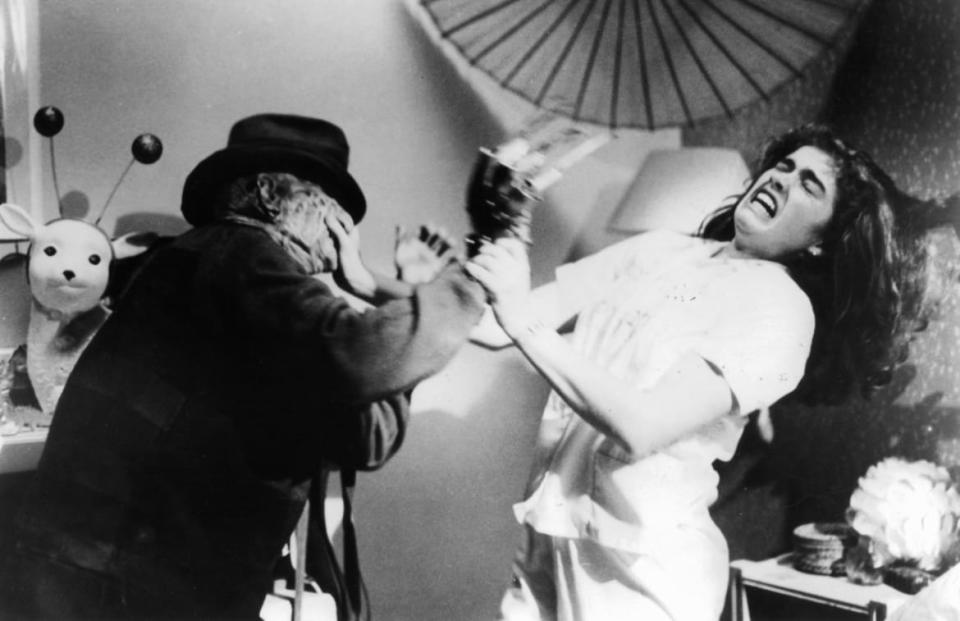
Is Freddy’s popularity also rooted in your friendliness—by which I mean, maybe we love to be scared by monsters that we also find likable, because it makes us more comfortable with our fears?
I think there’s a bit of a wink. When you’re in the nightmare, you’re not in reality; you’re in a dreamscape, and that character’s dream/nightmare. And Freddy’s in it too, and he’s exploiting that subconscious. But you’re witnessing it. If you think of the dream as having a proscenium around it, without talking to the audience, Freddy almost anticipates the audience’s expectation about how he’ll get to that victim. We know that girl hates bugs, so what’s Freddy going to do to her? That’s Freddy’s entrée into her subconscious, and his way of terrifying and punishing her.
Just as a theatrical construct that Wes Craven realized the audience would relate to—the audience anticipates what Freddy is going to do to that victim, and then Freddy does it, and that’s a fulfillment. Because of that, it’s almost like Freddy’s winking to the audience, going “You were right.”
Harrison Ford is resurrecting Indiana Jones for one more blockbuster this summer, and he’s said that when he’s finished playing the character, the character is done. Do you feel similarly protective, in a proprietary way, about Freddy?
Here’s my proprietary fix on Freddy. For many years, I didn’t want to wear the makeup in public because we couldn’t light it like we do theatrically on sets. I didn’t want the audience to be disappointed, seeing Freddy out of the context of a Nightmare on Elm Street film. I wanted to protect it that way. But I’m a Hollywood kid, and I certainly understand that other people are going to play Freddy. I’m not an idiot—my momma didn’t raise no fool—and I understand that it’s far too successful a franchise to not remake it again at some point.
John Reynolds on the ‘Yellowjackets’ Finale Twist and Fans’ Hatred for His Character
It’s probably inevitable.
I was at a convention or a radio show, and someone had heard on the -nternet that they were thinking of using Kevin Bacon—now, this was three, four years ago, just before COVID—and I thought that was a great idea. Because I’m a big fan of Kevin Bacon’s, and I know he respects the genre, with Tremors, Stir of Echoes and other things he’s done. I know he’s busy now, and I don’t know if they’ve found someone else. But knowing how graceful Kevin is, as a dancer as well, I thought that would have been a really good choice. But no, I don’t think I’m the only guy that can play Freddy.
They already remade A Nightmare on Elm Street once (in 2010, with Jackie Earle Haley as Freddy), and that didn’t fare well. Any ideas about how to revitalize it?
It might be smart of them to go with an unknown, because then he wouldn’t bring any baggage. But in a perfect world, if you had $50-$100 million to make a Nightmare on Elm Street movie, and you had five potential victims of Freddy Krueger, all they know—those potential victims—is that he had a makeshift glove with knives on it, that he wore an old sweater, and he wore a hat. They don’t know what kind of sweater it is; it could be a cardigan with stripes on it, it could be an old rugby sweater, and the hat could be an old frayed baseball hat. He could be taller than I am, he could be heavier, stout, like a little fire hydrant. He could be emaciated and cadaverous. The burns could just be on half his face. He could have hair.
He could be anything.
We don’t know, and it would be interesting that when Freddy attacks every person in their subconscious, it’s their imagination of Freddy that’s manifested. Then at the end, or at the beginning, we see the real Freddy, who’s like a puppetmaster for all these various incarnations that people imagine him as. I’ve always thought that would be fun to do – where you have different Freddys.
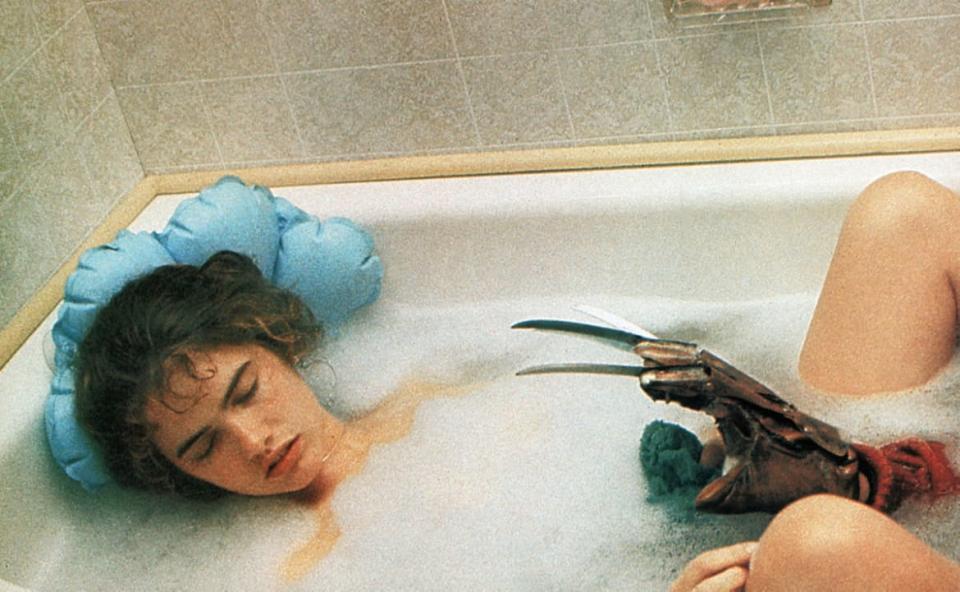
Of all the Nightmares, do you have a favorite?
I think if you took a vote, A Nightmare on Elm Street 3: The Dream Warriors would be the fan favorite. It’s the greatest hits. I like my performance in Renny Harlin’s A Nightmare on Elm Street 4: The Dream Master. Renny left me alone, he let me dance it a little more. There’s an awful lot of surrealistic landscapes in that movie, and I wanted to paint myself into that frame, whether it was a classroom or a junkyard. I was a little more cat-like because it’s a dream, and Freddy’s not walking down an alley in reality normally; he’s in this dream, and he’s mesmerizing the dreamer. I like my performance best in that.
Wow. So Nightmare on Elm Street 4 is your favorite performance.
But I think the best film of the franchise is the master’s film, Wes Craven’s New Nightmare, No. 7. We made it for the fans, and it’s deconstructed horror. There’s a lot of Easter eggs in it, and you can watch it several times. It holds up. It’s very, very clever. It’s the return of Heather Langenkamp. It deals with the reality of exploiting murder and death and darkness in Hollywood. We get to spoof ourselves a little bit. When that movie came out, it was successful, but it wasn’t a blockbuster hit. And then Scream came out, and it became the blockbuster, but Scream taught people how to watch Nightmare on Elm Street 7. Then when Nightmare 7 came out on DVD, it was huge, because people knew how to rediscover it, and it finally got the praise it deserves.
What’s the non-Nightmare project you’re most proud of? Is it V, which just celebrated its 40th anniversary? Or perhaps The Mangler? 2001 Maniacs?
I’m really happy that they screened Hollywood Dreams & Nightmares at the wonderful old Aero Theatre in Santa Monica, California in May, and I requested that they include both Stay Hungry and The Last Showing, a film I did with Finn Jones over in the U.K. I’m really proud of those two performances. I have a great fight scene in Stay Hungry, and a five-bank pool shot that I nailed on the second take—no CGI! It’s a very human film about the new South in America, made in the mid-’70s by the late, great Bob Rafelson. I’m glad they included that.
Arian Moayed Hopes the ‘Succession’ Stewy Hive Comes Out For ‘You Hurt My Feelings’
Are there any non-horror roles you wish you’d nabbed—or hadn’t turned down?
There was a movie that I went down to the wire for with Gene Hackman that was not a success at all, called March or Die, but at the time it was one of the biggest productions in Hollywood. I thought I would die if I didn’t get it, and of course, I didn’t. I also went up for the Randy Quaid role, briefly, in The Last Detail. Randy’s brilliant in that movie, but I loved that book and I really wanted to be in it. I wanted desperately to be in Apocalypse Now; I loved the role of the cook but I was too young, and then I interviewed for the surfer, and they thought I was too old!
Too old!
I was supposed to sidekick Arnold Schwarzenegger in a film for Paul Verhoeven called Crusade, where I would have played his valet monk. I was going to shave a bald spot—now I have one!—and it was sort of my Klaus Kinski part, you know? It would have been six months in Spain, and I knew Arnold from Stay Hungry, so I would not have been intimidated to work with him and help him up on his horse with all of his armor! That would have been an adventure that would have been a pretty remarkable life experience.
To say the least.
But you know, you get to be my age and you realize that fate… I never set out to be a horror actor, but by doing science fiction and horror, I’ve done probably close to fifteen or more movies abroad now, and in really exotic places, whether it’s Russia or Africa or all over Europe. My wife and I love that. Because when you work abroad, you’re not really a tourist. And the people you work with, they turn you onto secret little resorts and beaches and lakes and restaurants, and I can go back to those places not as a tourist but as someone who actually worked there. That’s been a great gift, especially in my old age!
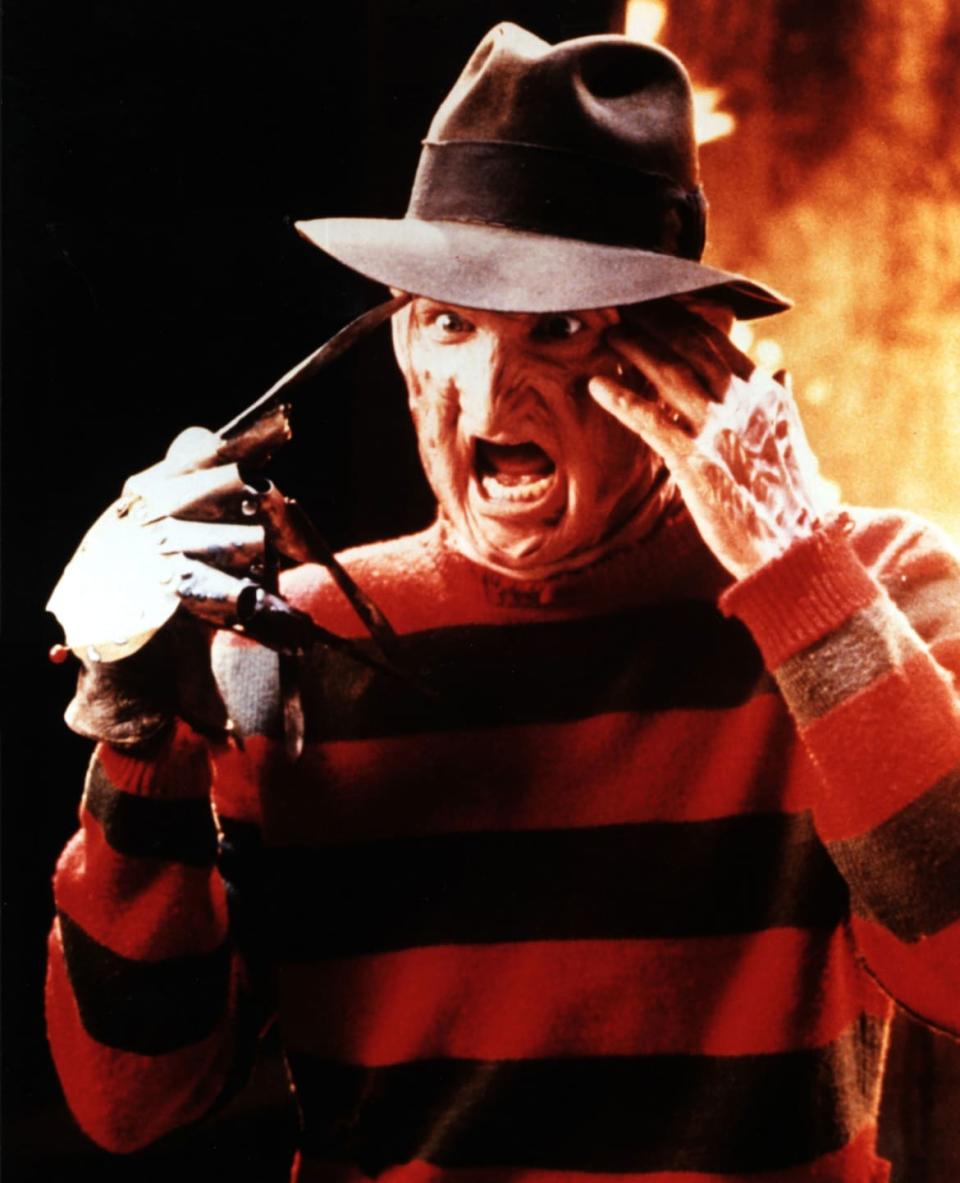
There’s a lot of conversation in Hollywood Dreams and Nightmares about the way in which Freddy made you a huge star, and yet also pigeonholed you. Was it tough to come to terms with that? Are you now content with how everything turned out?
I’m going to be 76 in a matter of days, and I have a movie coming out, and I start another movie in October—so I think I did the right thing. And here’s why: You can age in the horror genre, and in the science-fiction/fantasy genres. I was typed in the ’70s as the best friend/pal/sidekick. Back in the ’30s/’40s/’50s, those parts aged very well. But around the ’60s-’70s, the sidekicks were all young. They didn’t age. You didn’t have a leading man like Brad Pitt or Ben Affleck or Matt Damon hanging out with an old guy; they were always out with younger guys.
That’s true.
In the old days, Jimmy Stewart and John Wayne, they all had older buddies, like mentors. They might be an alcoholic, like in Anatomy of a Murder, or it might be Walter Brennan limping around in Rio Bravo. They had these older guys that were their sidekicks and friends. So I would have aged out of the best friend roles. The fact that I shifted into genre films probably elongated my career. I’m really grateful for that.
Keep obsessing! Sign up for the Daily Beast’s Obsessed newsletter and follow us on Facebook, Twitter, Instagram and TikTok.
Get the Daily Beast's biggest scoops and scandals delivered right to your inbox. Sign up now.
Stay informed and gain unlimited access to the Daily Beast's unmatched reporting. Subscribe now.

